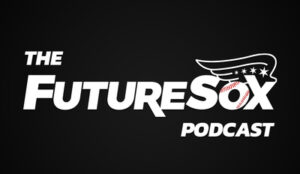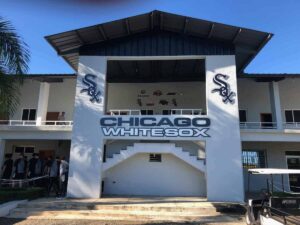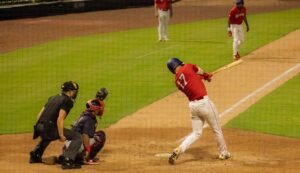Handicapping the Spring Training battles – Shortstop
The White Sox go into camp with very few open questions around roster slots for Opening Day. Barring injuries, all but maybe four of the 25 slots are solidly accounted for. But there are a few battles we’re watching, with probably the most important being who starts at shortstop. Who wins the job will also effect who gets a utility infielder role – and there could be either one or two of those. Simple math tells us that at least one and possibly two of these candidates won’t be on the roster come April.
Let’s look at each candidate, and apply some odds. What are the chances for each of the four candidates for the role getting the job? And also for each, if they don’t grab a starting spot, what are their chances at a bench role?

1. Jimmy Rollins
- Contract status: Minor league deal, $2M if in majors, no options or escalators
- Minor league options remaining: n/a (Rule 20)
- Chances of winning the starting job: 45%
- Chances of winning a utility role as a consolation prize: 40%
- The case for Rollins: 15-year major league career including multiple Gold Gloves and All Star games, more power than his competitors, still some speed, prime mentor & leader candidate
- The case against Rollins: 37-year old shortstop, defensive value diminishing and probably not league average anymore, hitting numbers in steady decline and hit new lows in 2015, most expensive contract if in the majors
- Watch for: How far his defense really has, or has not, fallen off.
Signed just as camp was opening for the spring, Rollins brings a very impressive resume to the team. He was signed to a minor league deal though, no guarantee of a job, and a $2M salary if he does make it. Long-time White Sox fans will assume Rollins is being given the job, being familiar with the team’s history of preferring veteran talent versus younger players in these sorts of battles. But this is a somewhat different regime, and given the contract situation, this doesn’t look like the same situation as we’ve seen before.
How much of Rollins’ one-time elite game is still left in the tank? That’s what the question really comes down to here. If it’s more than fumes, he has a good chance at the job. It’s worth noting that team executives and coaches are talking up the importance of Rollins’ presence off the field, making this almost seem like a player-coach signing. That means, if he doesn’t end up being a starter, he may very well be on the bench in that dual role (though he’s really only played shortstop as a pro).
A platoon or split with Saladino (who we will cover next) is also a strong possibility, and it may come down more to the balance of playing time than a simple yes or no for the job.

2. Tyler Saladino
- Contract status: Pre-arbitration, minimum salary
- Minor league options remaining: 2
- Chances of winning the starting job: 40%
- Chances of winning a utility role as a consolation prize: 50%
- The case for Saladino: Just reaching prime age, defense seen as at least league average, minimum salary, potential for improvement and value addition, more power than the younger competitors, above average speed, stronger arm than Sanchez
- The case against Saladino: Minimal major league experience at shortstop, likely below average bat, less power than Rollins, prior health problems (TJS) associated with a low-slot throwing motion
- Watch for: Can he hit the ball with more authority than we saw in his major league stint? How are his throws looking from short?
Until about a week ago, Saladino appeared to have the starting job at shortstop nearly locked up. Then the club signed Mr. Rollins, who appears to have a slight edge. Before assuming the Sox are dead set to go with the veteran player, remember that Rollins’ deal is of the minor league variety and that the Sox were clearly willing to go into 2016 with Tyler as their starting shortstop. Remember too that the Sox elected to go with Micah Johnson at second base last year, over not only Saladino and Carlos Sanchez, but also veterans Emilio Bonifacio and Gordon Beckham. So the gap between these two is really quite narrow.
The club refers to Saladino as a very good defensive shortstop, and certainly he should at least be competent there (though expecting him to be a wizard is too much). He played plenty there in the minors with success. The bat is the big question – he has shown significant game power at times during his pro career, but he mostly didn’t hit the ball very hard in his major league stint. If he’s comfortable now and can get some of that power to show up again and make consistent contact, he could very well get the balance of playing time at short.

3. Carlos Sanchez
- Contract status: Pre-arbitration, minimum salary
- Minor league options remaining: 1
- Chances of winning the starting job: 10%
- Chances of winning a utility role as a consolation prize: 80%
- The case for Sanchez: Smoother with the glove and footwork than his competition, more overall major league experience than the other young candidates, above average speed, improved hitting in the 2nd half, record of improvement in 2nd years at level
- The case against Sanchez: Played less than a dozen games at shortstop in the past three years, minimal power, poor offensive performance overall in the majors in 148 games
- Watch for: How well he handles the position defensively, particularly on positioning and throws, given his time away from it
Even before Rollins was signed, Sanchez was considered a long shot to win the starting job at short. He’s barely played there in the last few years, and he’s not seen as likely to provide significantly better offense than Saladino. That all said, he did show very good defensive skills at second that could play well at short, and he has played 195 games there in the minors. His arm isn’t as strong as Saladino’s, but he’s got very good reactions, footwork and hands.
It’s hard to envision Sanchez beating out both Saladino and Rollins. But he’s almost assuredly going to have a bench role, covering all three skill infield positions, pinch running, etc.

4. Tim Anderson
- Contract status: No service time
- Minor league options remaining: 3
- Chances of winning the starting job: 5%
- Chances of winning a utility role as a consolation prize: zero
- The case for Anderson: Blows away his younger competition on raw tools, current speed already a weapon, the team’s likely future at shortstop
- The case against Anderson: Still quite raw on both sides of the ball, hasn’t been above AA, just 5 years combined as a shortstop thus far covering high school, college and pros, showed struggles with zone judgment and pitch selection in AA
- Watch for: He would have to blow away his competition hands-down to even get consideration
Nominally, he’s in the race for the Opening Day job. In reality, he’s the man of the future but by most all accounts needs some time in AAA to further refine his tools. There’s a slim chance that if the fully realized Tim Anderson shows up in camp every day, and if the other candidates stumble, he could get the job. But it’s a very long shot, and not a fair expectation for the team’s top prospect. Facing refined pitching in AAA pitching is just what the doctor ordered.
There is no chance the team puts him in a utility role. He needs starter reps, and will very likely get them in Charlotte starting in April. There, once he’s made some adjustments he’ll almost inevitably need to, he could be up in September or perhaps even earlier.
Want to know right away when we publish a new article? Type your email address in the box and click the “create subscription” button. Our list is completely spam free, and you can opt out at any time.







